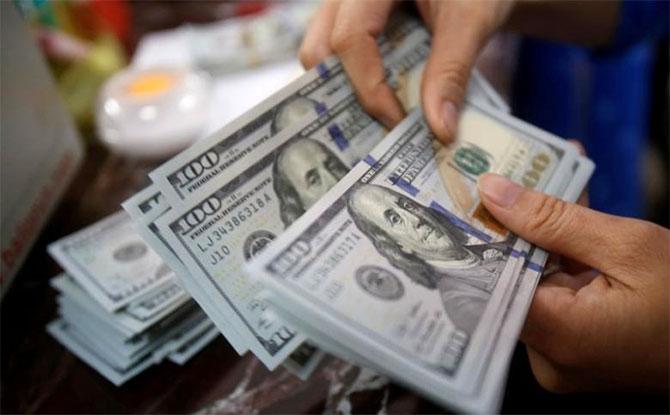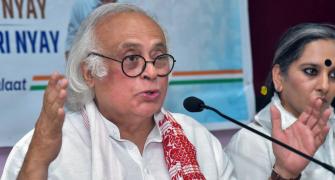There's surplus liquidity and RBI, with plentiful forex reserves, is ready to pump whatever extra is needed

Starting the middle of this month and peaking between October and November, foreign currency non-resident (FCNR) deposits worth $26 billion that banks in India raised three years earlier will start maturing.
The currency and allied markets are curious as to the impact of this one-of-a-kind phenomenon.
Banks have prepared different strategies and say they’re confident the redemptions will be met with no significant hiccup. There could be some impact on the exchange rate and the rupee might come under pressure but those should be a temporary blip.
The Reserve Bank of India (RBI) has already communicated that there would be a temporary liquidity mismatch but it is prepared to address these. It has clearly said there are enough reserves to meet the dollar outflow, if all else fails. Therefore, there is no panic in the system.
Background
To recollect the background, under an RBI scheme to meet a sudden need for dollars, banks raised these in 2013 through this route and swapped with RBI at a concessional rate. The underlying agreement is that at the time of maturity, RBI will return the dollars and banks will give RBI the rupee resources in return. The banks would then repay their depositors the dollars.
Resulting dollar outflow might put some pressure on rupee value; main impact on forward premia
Banks have enough funds to handle payments
So does RBI, prepared to pump in whatever more is needed
Analysts say HDFC Bank raised about $3.5 billion, while ICICI, Axis and State Bank of India raised about $2 bn each. Foreign banks and some other large public sector banks with presence abroad mobilised at least $1-2 bn each through the scheme. The rest were raised by banks that have a captive non-resident Indian (NRI) base repatriating money.
To ensure safe dollar supply, RBI went into the market, sold the dollars it received from banks in the spot market and contracted to buy these around the time of maturity. RBI did this with market-maker banks active in the foreign exchange market.
Now
The issue now is that some of the exporters from which banks will get the dollars to give to RBI have expressed their wish to ‘roll over’ their dollar contracts. This means some of the exporters are not releasing their dollars in the market and, therefore, the contracting banks have said they probably could not supply the entire lot of dollars contracted back to RBI.
Hence, the central bank might have to dig into reserves to honour the commitment, if need be. At the same time, to help banks tide over a rupee/liquidity shortage, RBI has also said it would do secondary market bond purchases and more short-term liquidity operations.
In sum, there is no reason to panic, even as the numbers involved seem huge. And, market partcipants say they’re at ease. They add the impact on the exchange rate would be minimal.
“Primarily, the implications of the redemptions will be felt on the forward premium rates, if at all,” said Badrinivas N C, country treasurer at Citi India.
Jayesh Mehta, head of treasury at Bank of America Merrill Lynch, agrees. He says the forward premium, now at 4.5 per cent from 6.5 per cent a few months earlier, has already started reflecting the demand for dollars.
Forward premiums will fall because a lot of dollars would be bought in the spot market around the time of redemption, only to be brought back in the market at a future date. Therefore, the value of dollars at a future date will fall and, thus, the premium would be less.
Perhaps reflecting this sentiment, HSBC said it expected the rupee to strengthen to 65 a dollar by March 2017, from 66.4 at present.
“There are limited risks, as RBI has enough tools to take care of any spike in volatility. However, one should not be complacent, given the size involved,” said Badrinivas.
“The market is prepared for FCNR(B) redemption in October and November. There could be a temporary mismatch in dollar and rupee liquidity. Dollar liquidity will be a function of how much exporters are able to give delivery during that time to meet any shortfall; there is good dollar liquidity available with overseas branches of Indian and foreign banks,” said Sidharth Rath, head of transaction banking at Axis Bank.
‘Not a problem’
There is surplus liquidity in the banking system, averaging Rs 70,000-80,000 crore daily, with RBI having decided to infuse what the system needs. This, and its promise to infuse as much as needed, should be enough for the system to tide over any temporary liquidity mismatch from the FCNR (B) redemptions, estimated to cost the banking system around Rs 1.5 lakh crore in rupee outgo.
“Since credit offtake is low, we are now flush with liquidity. What is needed would not even be a fifth of the liquidity we have now,” said an SBI official. SBI is neither looking to roll over the FCNR deposits and nor is it going to raise deposit rates to attract more, said the official, who did not wish to be named.
“Lenders will be fairly insulated. In the past three years, banks’ balance sheets have grown and so the impact from the outflow won’t be much. More, in the past year, deposits have grown at a better pace than credit, which also means banks might have excess liquidity,” said Ashish Parthasarthy, treasury head at HDFC Bank.
However, liquidity for some banks might get impacted if lacking adequate bond holdings to mortgage with RBI or to sell to it, to get the support. Even so, the chance of that is not much.
“Risk management practices won’t let banks sit idle without taking care of the liabilities in question. There could be some liquidity impact for some banks but for those who have to give dollars to the central bank, they must have done their own math,” said Harihar Krishnamurthy, head of treasury at First Rand Bank.
In any case, RBI is ready to supply the dollars from its reserves, as the greenbacks will eventually come back to the central bank. Estimates suggest the reserve drawdown could be about $10 bn only. RBI has $366 bn in the reserves.
“It is difficult to estimate but the banking system should be able to absorb at least $10-15 bn of outflow, and another $2-3 bn can be expected as inflow during this period. The market has its own mechanism to self-adjust if there is a shortfall and the premia falls,” said Badrinivas.
Photograph: Kham/Reuters








